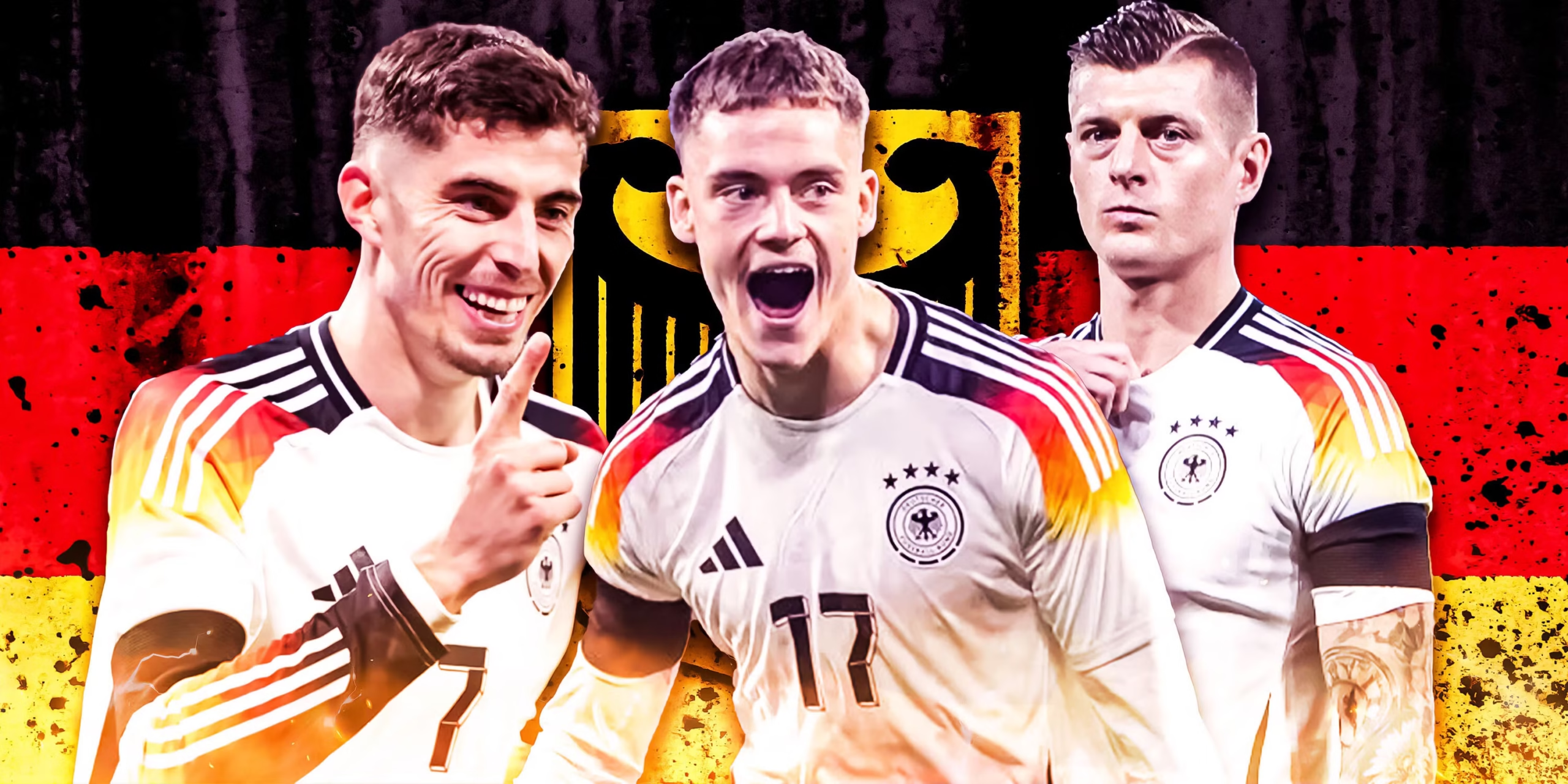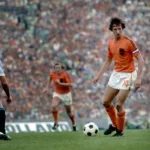Germany Best Midfielders have long set the standard for excellence in world football. From the legendary passing of Toni Kroos to the tactical genius of Joshua Kimmich, Germany consistently delivers midfielders who dominate both club and international stages. But what’s the secret behind this success? It’s not just natural talent. It’s a combination of elite coaching, structured development systems, and an unwavering focus on soccer IQ.
In this blog, we’ll dive deep into why Germany continues to lead the world in producing the smartest, most complete midfielders football has ever seen.
The Foundation: German Football Training Philosophy
German football training isn’t built around flashy tricks or raw physicality. Instead, it emphasizes:
- Technical Precision: Players are drilled in tight-space ball control, first touch quality, and short passing accuracy from a young age.
- Tactical Intelligence: Midfielders are taught to think two steps ahead, reading the flow of play instead of reacting to it.
- Position Versatility: Whether defending or attacking, German midfielders can adapt based on the needs of the team.
Youth soccer academies in Germany focus heavily on developing all-rounded players rather than specialists. Training centers like Bayern Munich’s Campus, Borussia Dortmund’s Academy, and VfB Stuttgart’s youth programs prioritize decision-making and tactical understanding over flashy solo skills.
This deep-rooted culture forms the starting block for producing world-class German midfield legends.
Youth Soccer Academies in Germany: The Midfielder Factory
Germany’s youth academies are considered among the best globally — and for good reason:
- Early Talent Identification: Scouting starts as young as age 8.
- Holistic Development: Players focus equally on physical conditioning, mental preparation, and soccer-specific IQ development.
- Mandatory Education: Alongside soccer, academic education is compulsory, ensuring players are well-rounded both on and off the pitch.
- Focus on Midfield Intelligence: Midfielders spend countless hours mastering passing drills, ball retention under pressure, and tactical positioning exercises.
Toni Kroos, for example, was polished through Bayern Munich’s rigorous youth system before becoming one of Real Madrid’s greatest midfield generals.
Joshua Kimmich developed at VfB Stuttgart, fine-tuning his positional play and tactical discipline in German soccer before stepping onto the world stage.
Every German youth academy treats midfield mastery as a top priority — and it shows.
Tactical Discipline in German Soccer: The Midfield Secret
Tactical discipline in German soccer is not optional — it’s a way of life.
From early youth teams all the way to the Bundesliga, players are drilled relentlessly on positioning, spacing, and game tempo.
Key Focus Areas:
- Off-the-Ball Movement: Midfielders must always offer passing options to teammates.
- Spatial Awareness: Understanding when to press, when to cover, and when to drop back is trained every day.
- Role Understanding: Whether operating as a deep-lying playmaker, a box-to-box engine, or a defensive shield, German midfielders are specialists in multiple roles.
Ilkay Gündoğan, captain of the German national team and a star for Manchester City and Barcelona, embodies this tactical mastery. His ability to control the rhythm of matches stems directly from the tactical schooling he received in German academies.
Because of these standards, German national team midfielders rarely lose structure, even under intense pressure in World Cup matches.
German Football Culture and Midfielder Mentality
German football culture has a unique mentality — known locally as “Mia San Mia” (We are who we are).
This mindset is embedded into every midfielder’s DNA:
- Resilience: German players are taught to remain calm, composed, and focused, even when trailing.
- Humility and Hard Work: Flashy individualism is discouraged; instead, players work tirelessly for the team.
- High Standards: Youth development in Germany demands constant improvement, no matter how successful a player becomes.
Midfielders like Bastian Schweinsteiger and Michael Ballack displayed these values throughout their careers.
They were never just creative players — they were leaders, fighters, and consistent performers.
In Germany, midfielders aren’t simply expected to create chances. They are trained to dominate mentally, physically, and emotionally over 90 minutes.
Bundesliga: A Midfielder’s Testing Ground
The Bundesliga is one of the toughest leagues for young midfielders — and that’s intentional.
Coaches and clubs view the league as a development crucible, not just a commercial product.
Why It’s Special for Midfielders:
- Tactical Diversity: Teams use a variety of systems — from pressing-heavy 4-2-3-1 formations to possession-based 4-3-3 setups.
- Physical Intensity: Midfielders must not only pass well but survive pressing traps and high-speed transitions.
- Opportunities for Youth: Clubs like Borussia Dortmund, RB Leipzig, and Bayer Leverkusen consistently promote young midfielders to senior squads early.
Players like Julian Brandt and Florian Wirtz have matured quickly because they are thrown into high-pressure, high-speed Bundesliga matches from a young age.
If a midfielder can survive and thrive in the Bundesliga, they’re ready for anything — whether it’s a Champions League final or a World Cup knockout match.
Passing Drills and Soccer IQ Development in Germany
Passing isn’t just another skill in German training — it’s treated as an art form.
German midfielders spend countless hours mastering passing drills that sharpen every aspect of ball movement and decision-making.
Typical Passing Drills in Germany:
- One-Touch Passing Circuits: Players must pass instantly upon receiving the ball, simulating real game tempo.
- Pressure Passing Rounds: Midfielders perform passing exercises while being pressed by defenders.
- Positional Rondo Games: Players must maintain possession in small areas, teaching patience and vision.
These drills boost not only technique but also soccer IQ development — the ability to make lightning-fast decisions under pressure.
In Germany, it’s not enough to pass well. Midfielders must know exactly when, where, and why to release the ball.
This system produces players like Joshua Kimmich, who can split defensive lines with a single, perfectly timed pass.
Top German Midfield Legends Who Set the Standard
Germany’s reputation for midfield greatness didn’t happen overnight.
It was built by generations of world-class players who redefined the role.
Key Legends:
- Lothar Matthäus: Captained Germany to the 1990 World Cup, mastering both defensive and attacking midfield roles.
- Michael Ballack: A powerhouse midfielder known for leadership, vision, and deadly finishing.
- Bastian Schweinsteiger: Embodied grit, intelligence, and calm under pressure, leading Germany to the 2014 World Cup victory.
- Toni Kroos: Arguably the best passer of his generation, with an unmatched ability to control the tempo of any game.
These German midfield legends were more than just good players — they symbolized tactical discipline, work ethic, and technical excellence at the highest level.
Each one has inspired thousands of young German midfielders currently rising through the ranks.
Modern German Midfielders: A New Generation Rising
Germany isn’t slowing down.
The next wave of midfield talent shows the same trademarks: intelligence, composure, and technical brilliance.
Standout Modern Midfielders:
- Joshua Kimmich (Bayern Munich): Combines world-class defensive skills with pinpoint passing and tactical mastery.
- Jamal Musiala (Bayern Munich): A hybrid midfielder/attacker known for dazzling dribbling and creativity.
- Florian Wirtz (Bayer Leverkusen): One of the youngest stars in Bundesliga history, with mature decision-making beyond his years.
- Leon Goretzka (Bayern Munich): Brings athleticism, powerful runs, and smart positioning to the heart of midfield.
These players prove that the German system — youth development, tactical education, and strong football culture — continues to produce the best midfielders in world football.
The future looks as bright as ever for German midfield mastery.
Why Germany’s Midfielders Excel Internationally
German midfielders aren’t just dominant in domestic leagues — they consistently excel on the biggest stages:
- World Cups and Euros: Germany’s triumphs in 1990 and 2014 were driven by midfield control, orchestrated by players like Lothar Matthäus, Bastian Schweinsteiger, and Toni Kroos.
- Champions League: German midfielders shine in Europe’s toughest club competition, leading clubs like Bayern Munich, Real Madrid, and Manchester City to multiple titles.
- Tactical Adaptability: Whether it’s a high-pressing English Premier League side or a slow build-up La Liga system, German midfielders adjust quickly and thrive.
The combination of tactical discipline in German soccer, superior soccer IQ development, and mental resilience makes German midfielders world-beaters, not just system players.
They aren’t just trained to win matches — they are groomed to dominate the entire rhythm of a game, no matter the opponent or the environment.
Germany’s Midfield Mastery is No Accident
Germany Best Midfielders didn’t happen by luck.
It’s the result of systematic training, elite coaching standards, cultural values, and constant focus on tactical intelligence.
From the tight passing drills of youth soccer academies in Germany to the battlefield of the Bundesliga, every step of their journey shapes complete midfield players.
Legends like Matthäus, Ballack, Schweinsteiger, and Kroos proved the model works.
The new generation — Kimmich, Musiala, Wirtz — is proof that Germany is still ahead of the world in midfield production.
When you combine technique, intelligence, leadership, and work ethic — you get exactly what Germany produces better than anyone else:
The world’s best midfielders.
Who is your favorite German midfielder of all time? ⚽
Drop your thoughts in the comments below!
And if you found this breakdown valuable, share it with friends and teammates — let’s spread the love for real midfield mastery!










